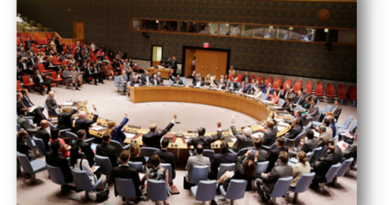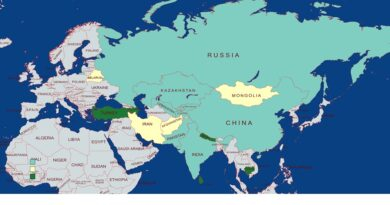NITI Aayog (National Institution for Transforming India)
Context: Government of India has replaced the old planning commission started in 1950 with a new institution called NITI Aayog on 1 January 2015. It works under the chairmanship of Prime Minister. NITI Aayog (National Institution for Transforming India) will seek to provide a critical directional and strategic input into the development process. It focuses on co-operative federalism.
What’s new with NITI Aayog?
The centre-to-state one-way flow of policy, that was the hallmark of the Planning Commission era, is now sought to be replaced by a genuine and continuing partnership of states.
- NITI Aayog = more a “think tank” than a finance distributing agency.
- The National institution for Transforming India will act as a catalyst for the development by a holistic approach.
- NITI Aaayog is based on the 7 pillars of effective governance – (1) Pro-People (2) Pro-Activity (3) Participation (4) Empowering (5) Inclusion of all (6) Equality (7) Transparency.
- Priorities include upliftment of the poor, marginalized and downtrodden.
- Empower vulnerable and marginalized sections, redressing identity-based inequalities of all kinds – gender, region, religion, caste or class.
- NITI Aayog will provide Governments at the central and state levels with relevant strategic and technical advice across the spectrum of key elements of the policy.
- With NITI Aayog, there will be multi-directional flow of policy (from Center to States, from States to Center, between ministries etc.)
- Better inter-ministry coordination.
- The NITI Aayog will develop mechanisms to formulate credible plans to the village level and aggregate these progressively at higher levels of government.
- The NITI Aayog will create a knowledge, innovation and entrepreneurial support system through a collaborative community of national and international experts.
NITI Aayog: Aims
The NITI Aayog aims to enable India to better face complex challenges, through the following:
- Leveraging of India’s demographic dividend, and realization of the potential of youth, men and women, through education, skill development, elimination of gender bias, and employment
- Elimination of poverty, and the chance for every Indian to live a life of dignity and self-respect
- Reddressal of inequalities based on gender bias, caste and economic disparities
- Integrate villages institutionally into the development process
- Policy support to more than 50 million small businesses, which are a major source of employment creation
- Safeguarding of our environmental and ecological assets
Objectives
The NITI Aayog has the following objectives as outlined in the Resolution forming it.
- To evolve a shared vision of national development priorities, sectors and strategies with the active involvement of States in the light of national objectives. The vision of the NITI Aayog will then provide a framework national agenda for the Prime Minister and the Chief Ministers to provide impetus to.
- To foster cooperative federalism through structured support initiatives and mechanisms with the States on a continuous basis, recognizing that strong States make a strong nation.
- To develop mechanisms to formulate credible plans at the village level and aggregate these progressively at higher levels of government.
- To ensure, on areas that are specifically referred to it, that the interests of national security are incorporated in economic strategy and policy.
- To pay special attention to the sections of our society that may be at risk of not benefitting adequately from economic progress.
- To design strategic and long term policy and programme frameworks and initiatives, and monitor their progress and their efficacy. The lessons learnt through monitoring and feedback will be used for making innovative improvements, including necessary mid-course corrections.
- To provide advice and encourage partnerships between key stakeholders and national and international like-minded Think Tanks, as well as educational and policy research institutions.
- To create a knowledge, innovation and entrepreneurial support system through a collaborative community of national and international experts, practitioners and other partners.
- To offer a platform for resolution of inter-sectoral and inter-departmental issues in order to accelerate the implementation of the development agenda.
- To maintain a state-of-the-art Resource Centre, be a repository of research on good governance and best practices in sustainable and equitable development as well as help their dissemination to stake-holders.
- To actively monitor and evaluate the implementation of programmes and initiatives, including the identification of the needed resources so as to strengthen the probability of success and scope of delivery.
- To focus on technology upgradation and capacity building for implementation of programmes and initiatives.
- To undertake other activities as may be necessary in order to further the execution of the national development agenda, and the objectives mentioned above.
Administrative Skeleton
- Chairperson: Prime Minister
- Vice-Chairperson: To be appointed by Prime-Minister
- Governing Council: Chief Ministers of all states and Lt. Governors of Union Territories.
- Regional Council: To address specific regional issues, Comprising Chief Ministers and Lt. Governors Chaired by Prime Minister or his nominee.
- Adhoc Membership: 2 member in ex-officio capacity from leading Research institutions on rotational basis.
- Ex-Officio membership: Maximum four from Union council of ministers to be nominated by Prime minister.
- Chief Executive Officer: Appointed by Prime-minister for a fixed tenure, in rank of Secretary to Government of India.
- Special Invitees: Experts, Specialists with domain knowledge nominated by Prime-minister.
Regional Councils
- Have specified tenures, with the mandate to evolve a strategy and oversee implementation.
- Be jointly headed by one of the groups Chief Ministers (on a rotational basis or otherwise) and a corresponding Central Minister.
- Include the sectoral Central Ministers and Secretaries concerned, as well as State Ministers and Secretaries. It will be linked to corresponding domain experts and academic institutions.
- Have a dedicated support cell in the NITI Aayog Secretariat.
- States would thus be empowered to drive the national agenda. As a consequence, deliberation would be more grass-roots informed, and recommendations would have more ownership, given their joint formulation.
- Special Invitees: experts, specialists and practitioners with relevant domain knowledge as special invitees nominated by the Prime Minister.
Full-time Organisational Framework:
Will comprise of, in addition to the Prime Minister as the Chairperson:
- Vice-Chairperson: to be appointed by the Prime Minister.
- Members: full-time: specialists with international exposure.
- Part-time Members: maximum of 2, from leading universities, research organizations and other relevant institutions in an ex-officio capacity. Part-time members will be on a rotational basis.
- Ex-Officio Members: maximum of 4 members of the Union Council of Ministers to be nominated by the Prime Minister.
- Chief Executive Officer: to be appointed by the Prime Minister for a fixed tenure, in the rank of Secretary to the Government of India.
- Secretariat: as deemed necessary.
NITI Aayog specialized Wings
- Research Wing – that will develop in-house sectoral expertise as a dedicated think tank of top domain experts, specialists and scholars.
- Consultancy Wing – that will provide a marketplace of whetted panels of expertise and funding for Central and State Governments to tap into; matching their requirements with solution providers, public and private, national and international. By playing matchmaker instead of providing the entire service itself, NITI Aayog will be able to focus its resources on priority matters, providing guidance and an overall quality check to the rest.
- Team India Wing – comprising representatives from every State and Ministry, will serve as a permanent platform for national collaboration.
Importance
- The 65 year-old Planning Commission had become a redundant organization. It was relevant in a command economy structure, but not any longer.
- India is a diversified country and its states are in various phases of economic development along with their own strengths and weaknesses.
- In this context, a ‘one size fits all’ approach to economic planning is obsolete. It cannot make India competitive in today’s global economy.
| NITI Aayog | Planning Commission |
| It serves as an advisory Think Tank. | It served as extra-constitutional body. |
| It draws membership from a wider expertise. | It had limited expertise. |
| It serves in spirit of Cooperative Federalism as states are equal partners. | States participated as spectators in annual plan meetings. |
| Secretaries to be known as CEO appointed by Prime- Minister. | Secretaries were appointed through usual process. |
| It focuses upon ‘Bottom-Up’ approach of Planning. | It followed a ‘Top-Down’ approach. |
| It does not possess mandate to impose policies. | Imposed policies on states and tied allocation of funds with projects it approved. |
| It does not have powers to allocate funds, which are vested in Finance Minister. | It had powers to allocate funds to ministries and state governments. |
Challenges
- To prove its mettle in policy formulation, the NITI Aayog needs to prioritize from the long list of 13 objectives with clear understanding of the difference in policy, planning and strategy.
- To build the trust, faith and confidence more than the planning commission, NITI Aayog needs freedom of various kinds with budgetary provisions not in terms of plan and non-plan expenditures but revenue and capital expenditure as the higher rate of increase in capital expenditure can remove infrastructural deficits at all levels of operation in the economy.
Niti Aayog: Criticism
- Like planning commission, it’s also a non-constitutional body which is not responsible to parliament.
- Dismantled planning commission without consulting the states.
- UTs are represented by Lieutenant Governors, not by chief ministers. This is against the principles of federalism.
- Fund allocation to welfare schemes may get affected. For example, there is a 20 % reduction in gender budgeting.
Way Forward
- Decentralization of planning but within a five-year plan framework.
- Bureaucratic inertia need to be shaken, specializing it and fixing the accountability on basis of performance.
- NITI Aayog could emerge as an agent of change over time and contribute to the government’s agenda of improving governance and implementing innovative measures for better delivery of public services.
NITI Aayog continues to be representative of efficient, transparent, innovative and accountable governance system in country with distinguished work ethics




